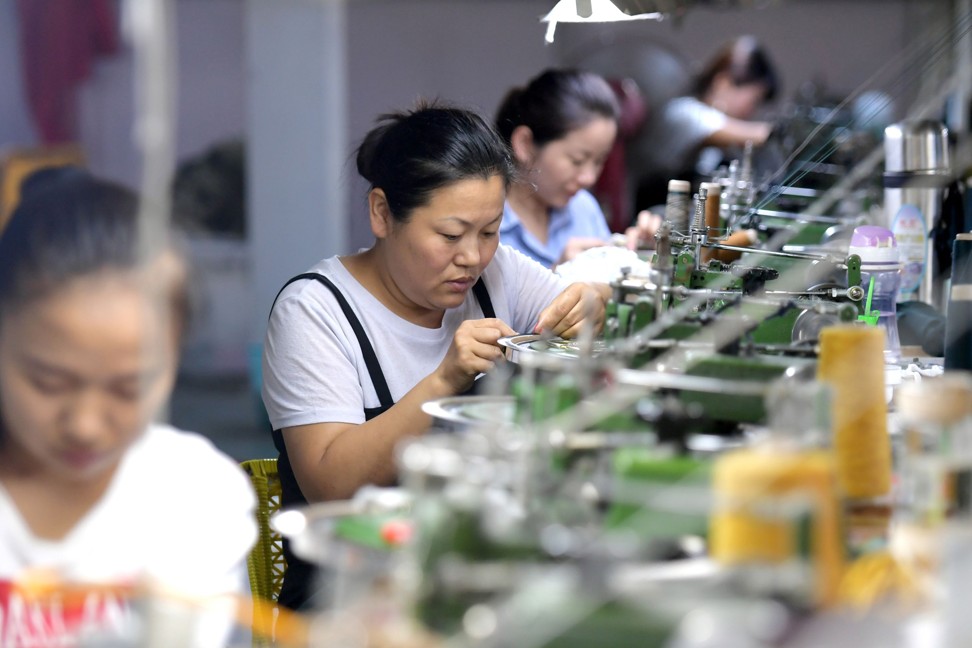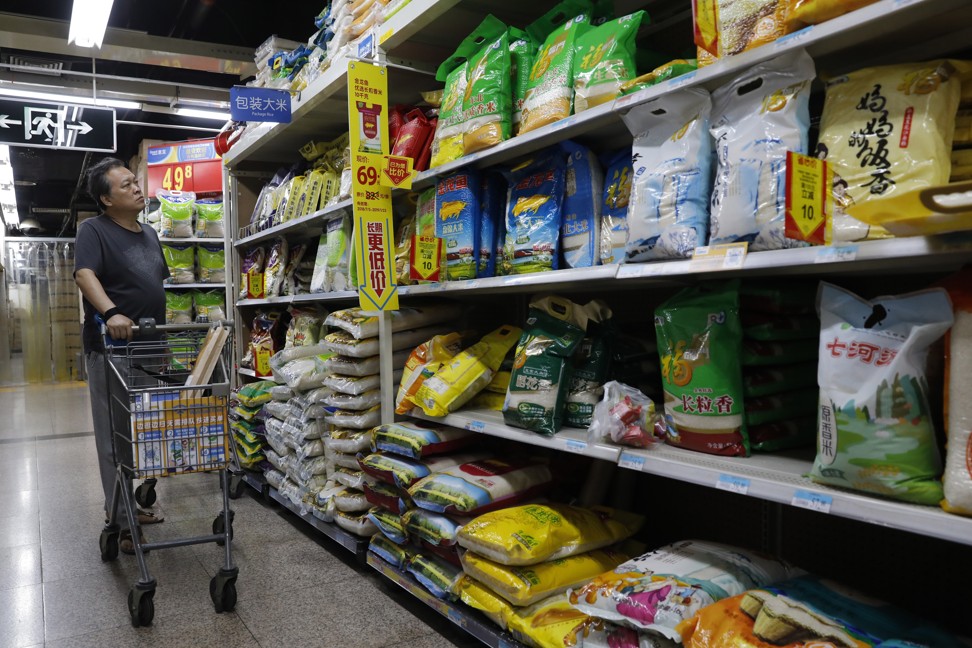
China’s trade surplus with US hits record high of US$34 billion as trade war rages on
Exports grow faster than expected in September as new US tariffs on US$200 billion of Chinese goods yet to bite, analysts say
China’s monthly trade surplus with the United States rose to a record high of US$34.1 billion in September on the back of an escalating trade war that shows little sign of cooling.
The figure, released on Friday by the customs administration, represented a 10 per cent increase from the US$31.05 billion surplus booked for August, suggesting Washington’s tariffs on imports of Chinese products have yet to have the desired effect of narrowing the trade gap between the two countries.
Trade war: China’s surplus with US grows 10 per cent to US$31 billion as Donald Trump ups ante
While Washington sees its trade deficit with China as evidence of the latter’s unfair trade practices, Beijing argues it is the inevitable result of their different positions in global value chains and denies pursuing a trade surplus.
An editorial published on Thursday by People’s Daily, the mouthpiece of China’s Communist Party, said that if the US wanted to narrow the trade gap it could sell four aircraft carriers to China.
Speaking on Fox News on Thursday, President Donald Trump said that previous US administrations had allowed China to pursue unfair trade practices for too long and that it was time he put a stop to it.
“They lived too well for too long and, frankly, I guess they think the Americans are stupid people,” he said. “Americans are not stupid people. We were led badly when it came to trade.”
China’s trade surplus with the US in September was greater than its total trade surplus of US$31.7 billion.
Its total exports grew faster than expected in the month – 14.5 per cent year on year in dollar terms, compared with 9.8 per cent in August – while import growth slowed to 14.3 per cent from 20 per cent, the customs administration said.
The strength in exports surprised many analysts and economists, partly because other economic indicators had suggested the opposite was likely. According to the official purchasing managers’ index, for instance, new export orders in September fell to their lowest level since February 2016.
There was strong demand for Chinese goods in Japan and Europe, while a spike in orders ahead of incoming tariffs meant exports to the US rose 14 per cent year on year.
Trade war: China ‘risks disengagement with US unless it changes’
Larry Hu, chief China economist from Macquarie Capital, said the figures went against the prevailing sentiment.
“The September trade data show that despite the fears, the trade war has yet to have a negative impact,” he said.
Meanwhile, the slower import growth may be a result of the headwinds faced by China’s economy, including lower consumer spending, slow credit growth, and a lacklustre property market.
Car imports fell 11 per cent in September to US$3.97 billion, which was generally in line with figures from the China Association of Automotive Manufacturers that said car sales in the month fell 11.6 per cent year on year to 2.4 million.
“What is interesting in today’s data is that you are seeing quite strong imports of hi-tech products and machinery equipment, like integrated circuit imports that grew 21.8 per cent year on year,” said Michelle Lam, a China economist at Société Générale in Hong Kong.
“A large part of that has to do with the government’s policy to develop its hi-tech industry.”
Washington escalated the trade war in September by imposing 10 per cent tariffs on US$200 billion worth of goods it imports from China and said the rate could rise to 25 per cent in January. Beijing responded with extra tariffs of between 5 and 10 per cent on US$60 billion worth of US goods.
While the latest US duties covered a broad range of consumer goods, China’s were mostly targeted at liquefied gas, machinery and electrical equipment.
US-China trade war becomes a hog’s dinner, as Beijing considers reducing soybean rations for pigs
However, as the new US tariffs came into effect only on September 24, their impact is unlikely to be seen until later in the year or early in 2019. Trump has also threatened to impose tariffs on effectively all goods the US imports from China.
“With global growth likely to cool further in the coming quarters and US tariffs set to become more punishing, the recent resilience of exports is unlikely to be sustained,” Julian Evans-Pritchard, a senior China economist at research firm Capital Economics, wrote in a note.
“Meanwhile, with policy easing unlikely to put a floor beneath domestic economic activity until the middle of next year, import growth is set to slow further,” he said.



